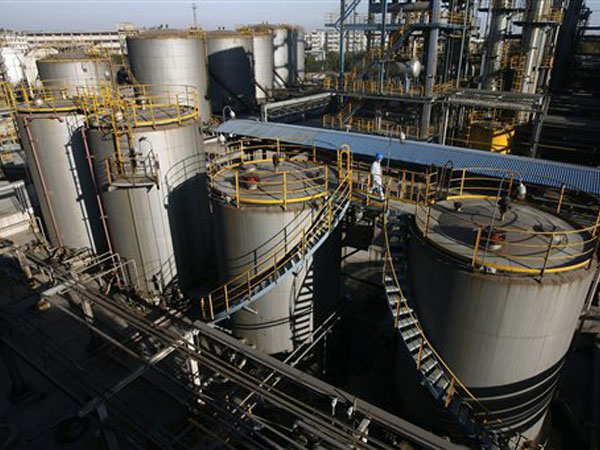
A worker crosses oil tanks in a refinery in China’s Hubei provice in this file photo. Oil prices rebounded on Tuesday as the US dollar weakened. AP FILE
NEW YORK, United States – Oil prices rebounded Tuesday from six-year lows as the dollar weakened after disappointing US economic data.
The US benchmark, West Texas Intermediate (WTI) for March delivery, rose $1.08 (2.4 percent) to close at $45.16 a barrel.
Brent North Sea crude for March settled at $49.60 a barrel in London, up $1.44 from Monday’s closing level.
“The market has found a bottom in the mid-40 range,” said Kyle Cooper of IAF Advisors.
Crude futures sank Monday to their lowest closing levels since early 2009. Crude has shed nearly 60 percent of its value in an almost uninterrupted slide since June due to a supply glut, largely boosted by robust US shale-oil production and weaker global economic growth.
The greenback has been strengthening for months, making dollar-priced oil relatively more expensive, adding to the pressure on the oil market.
A slight easing in the dollar Tuesday against major rival currencies such as the euro, yen and pound underpinned the buying, Cooper said.
“I didn’t see anything bullish today” for WTI, he said. “Equities are down, durable goods (are) not that good.”
New orders for long-lasting US industrial goods unexpectedly fell in December, by a steep 3.4 percent, signaling some persistent weakness in the manufacturing sector.
Saudi Aramco, the world’s largest oil company in terms of crude production and exports, acknowledged that prices have fallen too far but it was up to the market, not OPEC producers, to shore them up.
“It’s too low for everybody,” said Khalid al-Falih, the president of the state-owned energy giant, told a conference in Riyadh. “I think even consumers start to suffer in the long term.”
Falih also said US shale-oil production is important for the world’s long-term energy future and Saudi Aramco has earmarked an additional $7 billion for its own shale projects.
The kingdom is the leading exporter and top producer in the Organization of the Petroleum Exporting Countries, which provides about a third of global oil supplies.
In November, OPEC resisted calls to reduce output in the face of falling prices, keeping its output ceiling at 30 million barrels per day in a decision that exacerbated the global price slump.
RELATED STORIES
Oil prices rise as OPEC sees rebound
Euro hits 11-year low on Greece fears, Asian equities muted

